A Conversation with Bruce Duffie
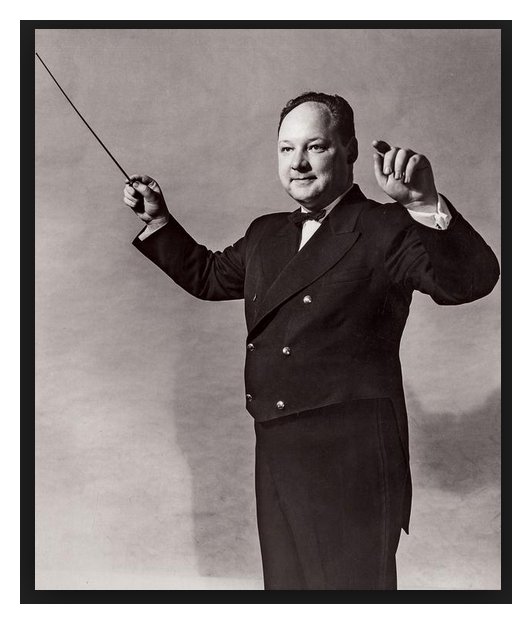

John Paynter, 67, Authority on Marching Bands By WOLFGANG SAXON Published: February 11, 1996 in The New York Times John Philip Paynter, who became a leading authority on marching and concert bands in 43 years as director of bands at Northwestern University near Chicago, died last Sunday in Glenview Hospital at the age of 67. A resident of Glenview, Ill., he had been admitted on Jan. 23 after suffering a stroke. Named for John Philip Sousa, Professor Paynter was a professor at Northwestern's School of Music, where he taught band music arranging and conducting to thousands of students. He had intended to retire at the end of the year, the 70th anniversary of his Wildcat Marching Band. Since 1956, Professor Paynter had also been the conductor of the 115-piece Northshore Concert Band, which he led in a repertory that ranged from standard polkas to modern composers like Paul Hindemith and Darius Milhaud. Professor Paynter was a stickler for sonority. "Any fool can play loud," he insisted. "It takes a good musician to play soft." His avocation was proselytizing for an American tradition, community bands of music teachers, dentists, bankers, sales clerks and other adults, and he helped organize dozens of such bands around the country. "The bands were there years ago but disappeared during the World War II years," he said. "Then came television." Professor Paynter was born in Mineral Point, Wis. His father played in amateur bands, admired Sousa and saw to it that his son received music training early on. He earned a master's degree in theory and composition at the School of Music at Northwestern, in Evanston. At age 23, in 1951, he was appointed to the faculty full time as director of the marching band, assistant director of bands and an instructor of theory. Two years later, he became director of bands. Last month struck a sentimental note for Professor Paynter when the Northwestern football squad played in the Rose Bowl in Pasadena for the first time since 1949, when he had been with the Wildcats as an advance man and a student member of the band. He is survived by his wife of 47 years, Marietta Morgan Paynter; a son, Bruce, of Glenview; a daughter, Megan Anderson of Lake Forest, Ill., and four grandchildren. |
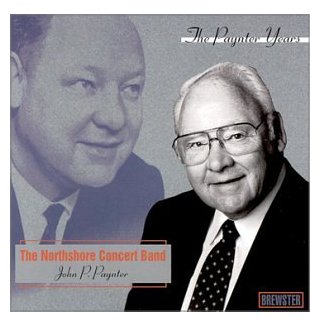 BD: How so?
BD: How so?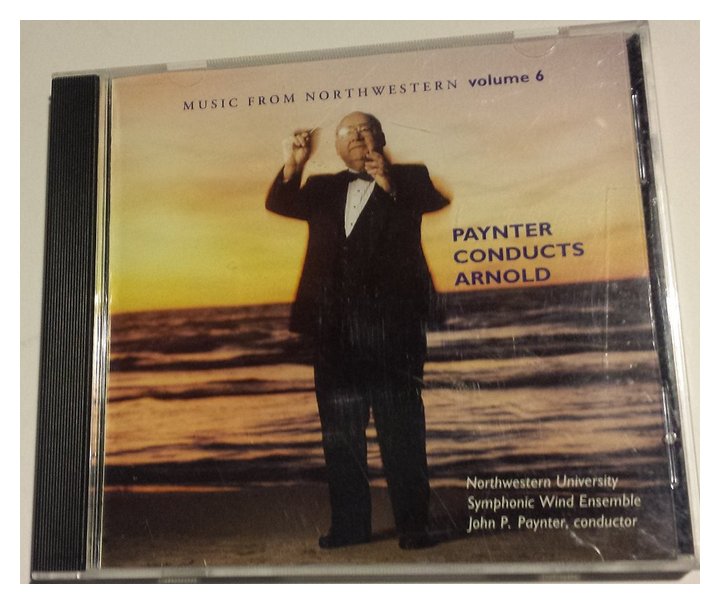
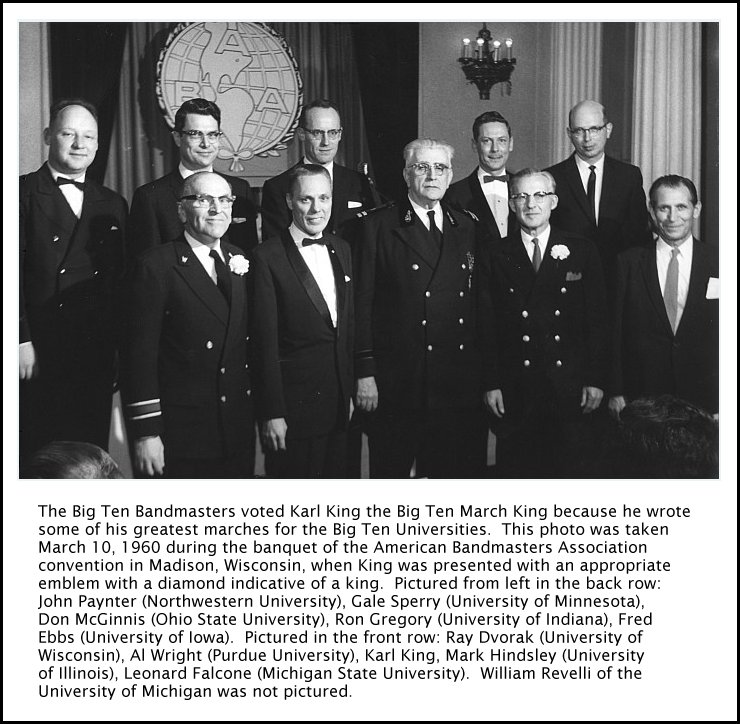 JPP: I don’t give that much advice. The one
thing I do notice is the carryover they have in their mind or in their ears
from a Sousa band or a Goldman band. I loved that writing and they’re
both good composers, but the formula for that writing was to make the overall
color of the band very gray, and the new composers today must discard that.
Those older masters would use so many couplings and doubles of instruments
that a flute might not sound as much like a flute as it might a flute mixed
with a clarinet and so forth. I’ve seen several works of that kind
where the character of the instrument has been omitted. I want to have
a chance to use them for the colors that they produce, and not make them
all blend. That’s a lazy listening kind of thing. I like to see
a lot of open spaces in the upper winds. I like to see a lot of people
taking a rest so that when they come in, it’s a fresh sound and it takes
on a new meaning.
JPP: I don’t give that much advice. The one
thing I do notice is the carryover they have in their mind or in their ears
from a Sousa band or a Goldman band. I loved that writing and they’re
both good composers, but the formula for that writing was to make the overall
color of the band very gray, and the new composers today must discard that.
Those older masters would use so many couplings and doubles of instruments
that a flute might not sound as much like a flute as it might a flute mixed
with a clarinet and so forth. I’ve seen several works of that kind
where the character of the instrument has been omitted. I want to have
a chance to use them for the colors that they produce, and not make them
all blend. That’s a lazy listening kind of thing. I like to see
a lot of open spaces in the upper winds. I like to see a lot of people
taking a rest so that when they come in, it’s a fresh sound and it takes
on a new meaning.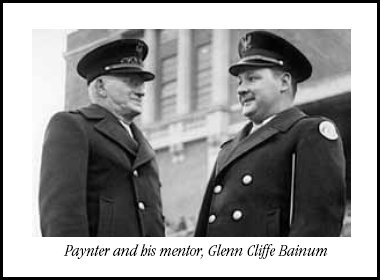 JPP: No, because if nothing else has changed, it’s
the maturity of the conductor, and the maturity of the players. Doctor
Albert Austin Harding (1880-1958) at the University of Illinois is the one
whom I regard as the patron saint of the modern concert band. I had
the great thrill of knowing him through the conversations that he had with
his student, Glenn Cliffe Bainum, who was my teacher. I would be sitting
back in the corner of the back seat of the car as they talked to each other
en route somewhere, and I remember him saying that he had discovered about
himself that all of the slow tempos that he knew had gotten slower, and all
the fast tempos that he knew had gotten faster. They concluded, then,
after some discussion of that subject, that really is what happens to people.
The slow gets slower, and the fast gets faster. I don’t know what the
basis of it is. Maybe they discovered that the attractive music for
them, in their maturing years, was that which goes at a slow and expressive
pace, and the fast music has to be done away with quickly to get to the next
slow piece! [Both laugh] I don’t know just what it is, but I find
myself doing the same thing. I find myself each year playing the adagios a little more adagio, and the fasts simply get as fast
as can be.
JPP: No, because if nothing else has changed, it’s
the maturity of the conductor, and the maturity of the players. Doctor
Albert Austin Harding (1880-1958) at the University of Illinois is the one
whom I regard as the patron saint of the modern concert band. I had
the great thrill of knowing him through the conversations that he had with
his student, Glenn Cliffe Bainum, who was my teacher. I would be sitting
back in the corner of the back seat of the car as they talked to each other
en route somewhere, and I remember him saying that he had discovered about
himself that all of the slow tempos that he knew had gotten slower, and all
the fast tempos that he knew had gotten faster. They concluded, then,
after some discussion of that subject, that really is what happens to people.
The slow gets slower, and the fast gets faster. I don’t know what the
basis of it is. Maybe they discovered that the attractive music for
them, in their maturing years, was that which goes at a slow and expressive
pace, and the fast music has to be done away with quickly to get to the next
slow piece! [Both laugh] I don’t know just what it is, but I find
myself doing the same thing. I find myself each year playing the adagios a little more adagio, and the fasts simply get as fast
as can be.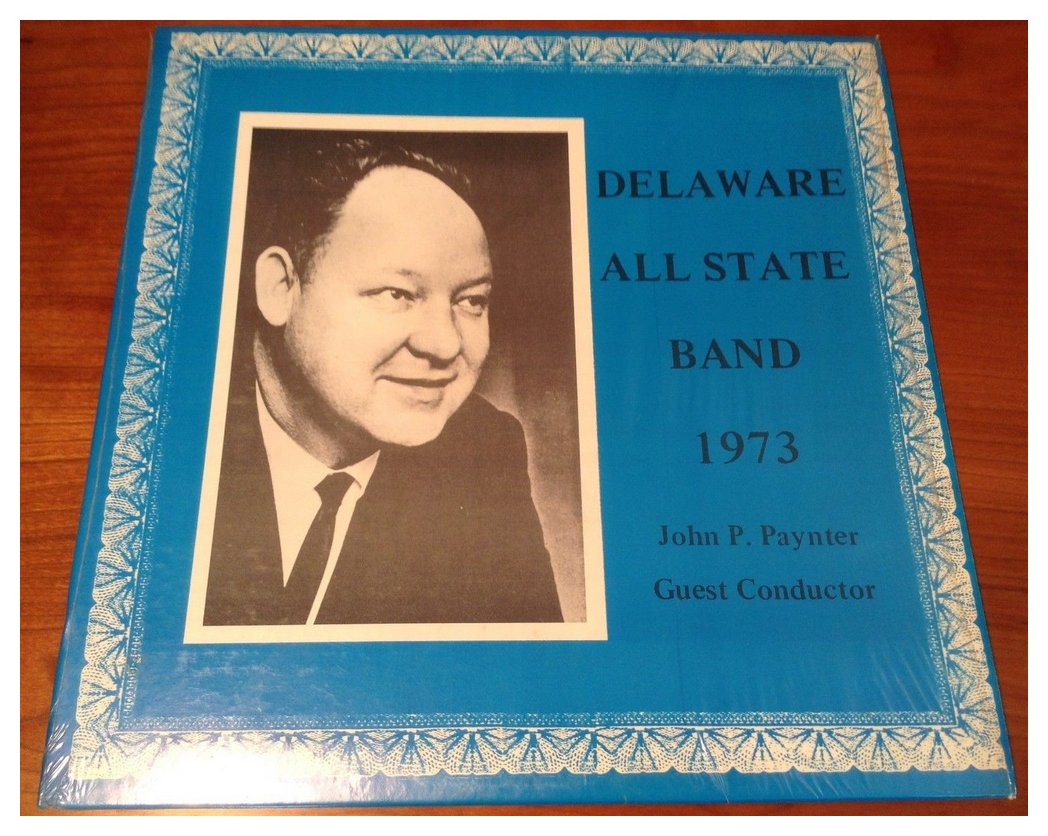
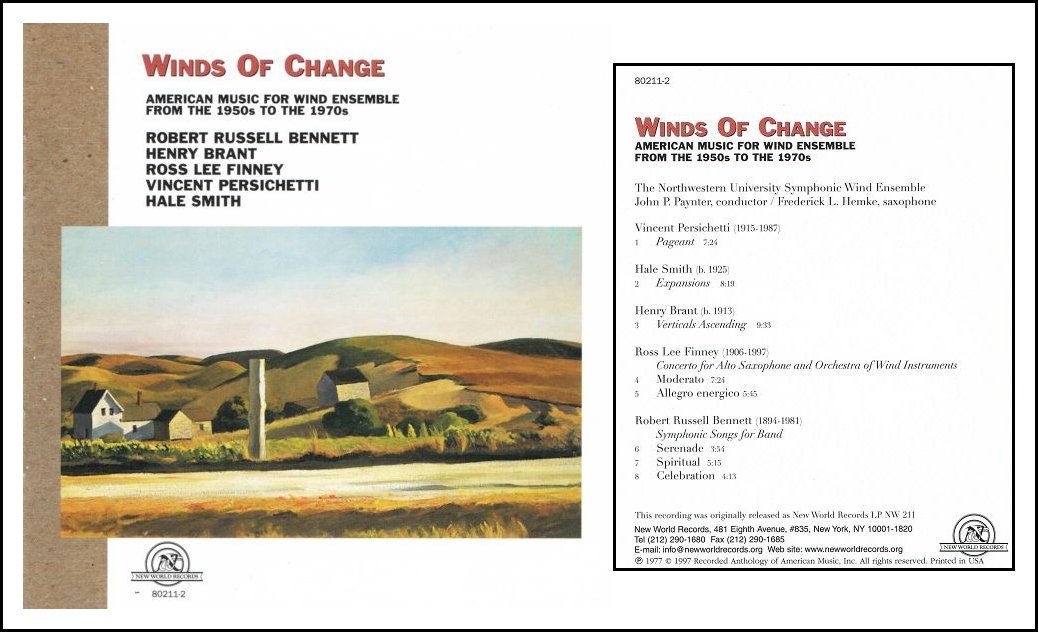
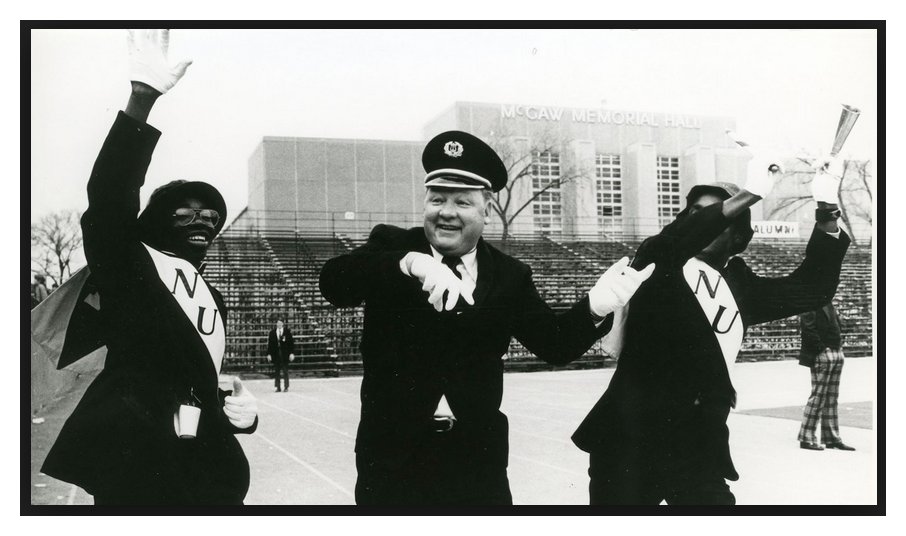
© 1993 Bruce Duffie
This conversation was recorded in Chicago on March 15, 1993.
Portions were broadcast on WNIB the ten weeks later. This transcription
was made in 2015, and posted on this website at that time.
To see a full list (with links) of interviews which have been transcribed and posted on this website, click here.
Award - winning broadcaster Bruce Duffie was with WNIB, Classical 97 in Chicago from 1975 until its final moment as a classical station in February of 2001. His interviews have also appeared in various magazines and journals since 1980, and he now continues his broadcast series on WNUR-FM, as well as on Contemporary Classical Internet Radio.
You are invited to visit his website for more information about his work, including selected transcripts of other interviews, plus a full list of his guests. He would also like to call your attention to the photos and information about his grandfather, who was a pioneer in the automotive field more than a century ago. You may also send him E-Mail with comments, questions and suggestions.